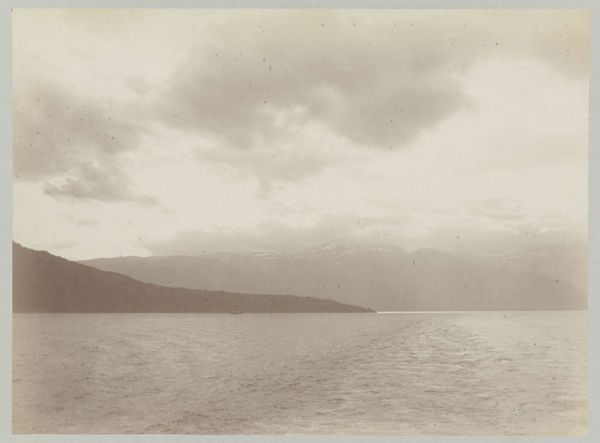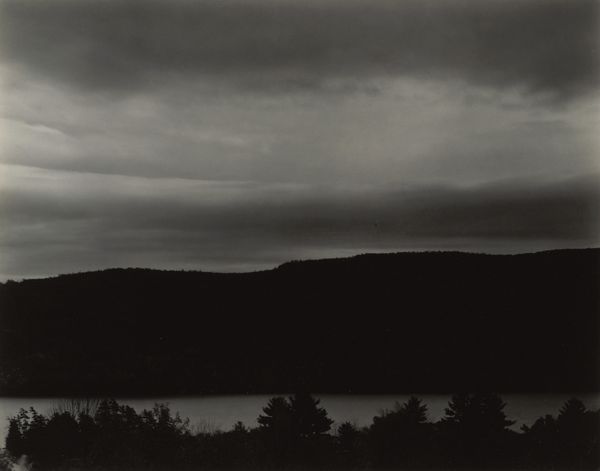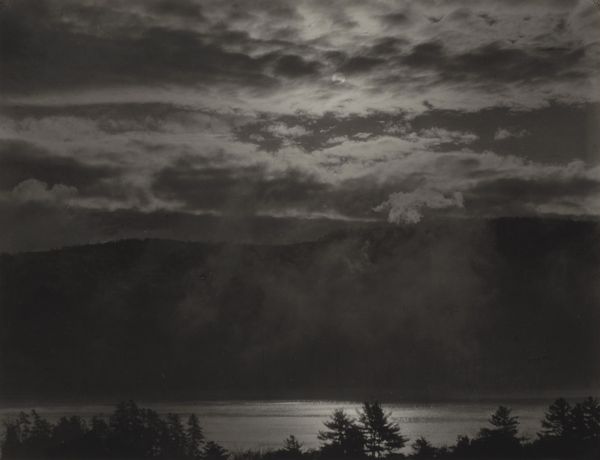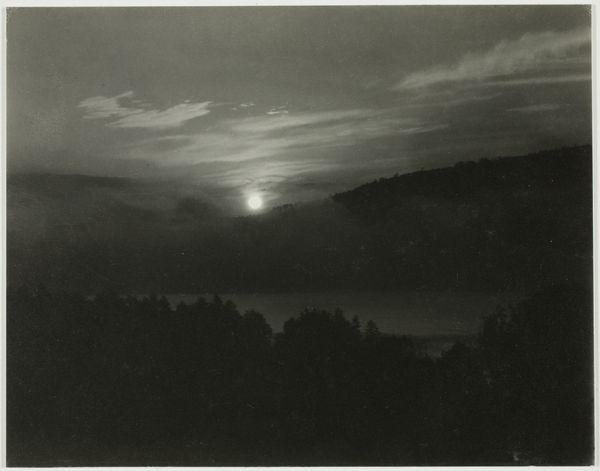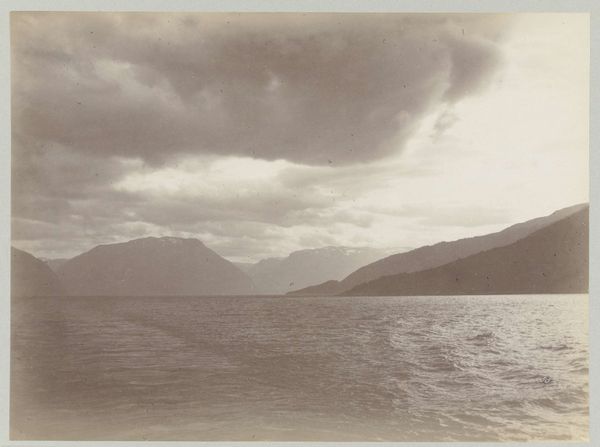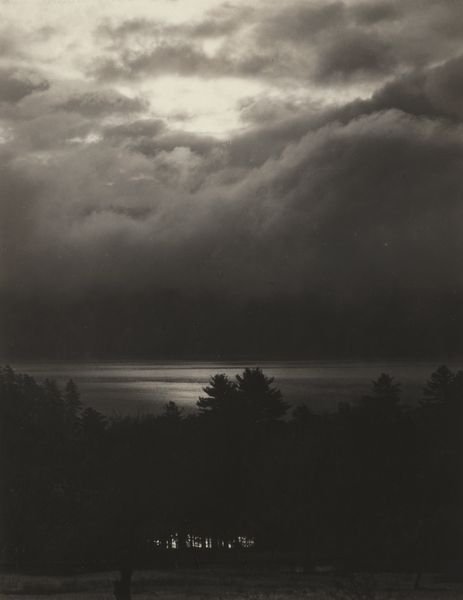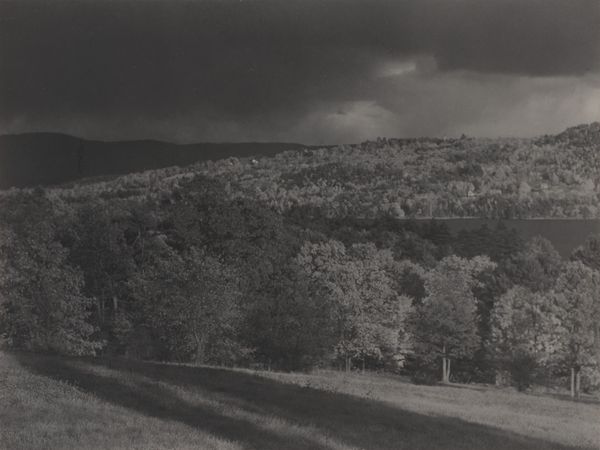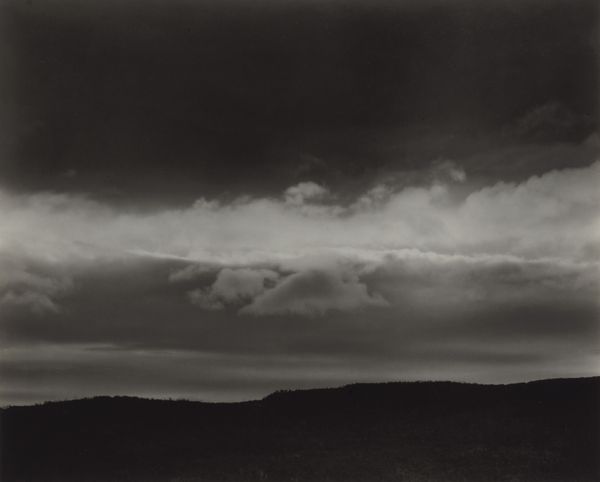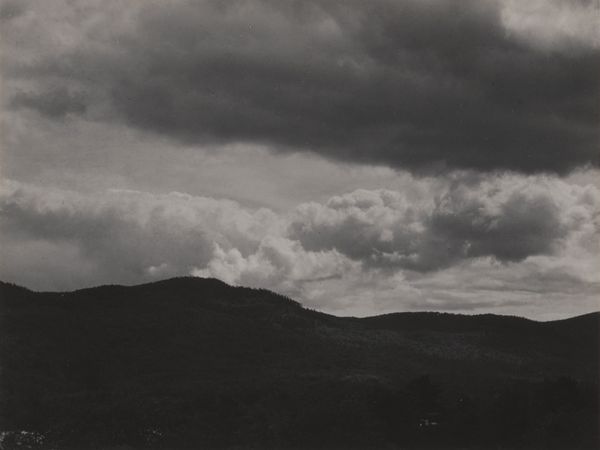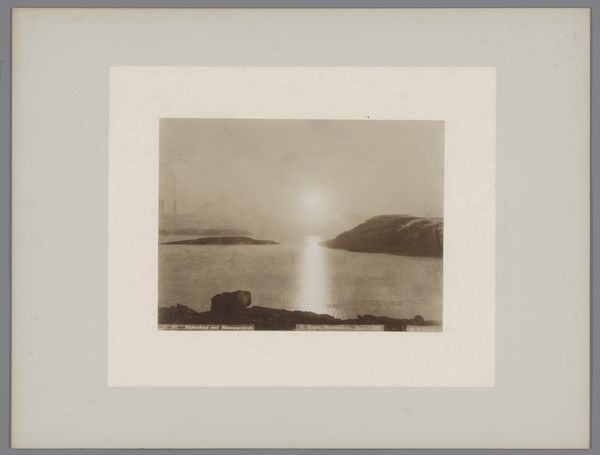
print, paper, photography
#
pictorialism
# print
#
landscape
#
paper
#
photography
#
geometric
#
united-states
#
modernism
Dimensions: 19.7 × 24.4 cm (image); 20.2 × 25.2 cm (paper); 20.3 × 25.4 cm (first mount); 48.9 × 39.3 cm (second mount)
Copyright: Public Domain
Editor: Here we have Alfred Stieglitz's photograph, "Lake George," created in 1922. It's a monochromatic landscape print, primarily in shades of grey. There's a brooding stillness to it; the geometric compositions between land and cloud give me a very calm but also dramatic mood. What strikes you most about this photograph? Curator: Stieglitz, a key figure in promoting photography as fine art, consistently challenged established art institutions through his work and gallery spaces. In "Lake George," the dramatic sky and its almost equal distribution of space with the more firmly planted earthly forms suggests a kind of spiritualist striving that was very characteristic of much art from this period that directly followed the trauma of the First World War. The scene almost flattens into abstraction. Does that abstraction align with your reading of the overall mood? Editor: Yes, definitely. The flatness contributes to the stillness and elevates it from being just a representation of a landscape into something more symbolic. It feels… almost like a symbolist painting but with the stark realism that only photography can capture. In that regard, to me the photograph almost argues with itself between being a representation and a commentary on it. Curator: That tension you observe is vital. Stieglitz, through his publication *Camera Work* and the "291" gallery, championed modern art, introducing European avant-garde movements to the American public. He helped introduce many Americans to modernism through photography by using "straight photography." Do you see any evidence of that artistic rebellion or tension in his other landscapes? Editor: I think so. Knowing about his efforts makes me see "Lake George" as more than just a pretty landscape; it's a statement about what photography *can* be. I realize I’m considering the social impact more, now, how it challenges norms. Thanks for offering that frame! Curator: Precisely. Stieglitz aimed to prove photography's artistic merit, forever altering its place within the established art world, and its place within public perception of that world. This piece allows us to consider photography's dynamic and somewhat precarious cultural placement, and what’s at stake in considering that place as unstable.
Comments
No comments
Be the first to comment and join the conversation on the ultimate creative platform.
